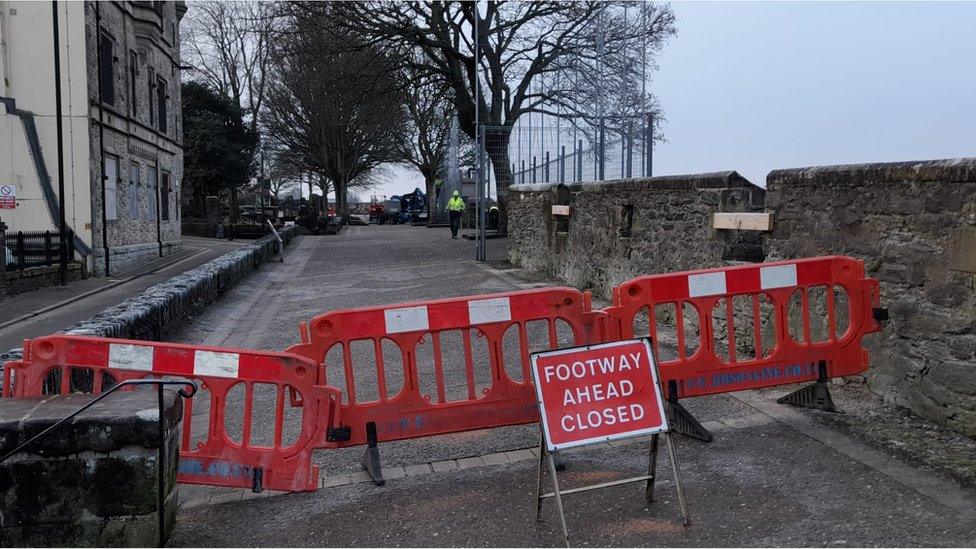Derry Walls: Planned removal of security fencing 'a step forward'
- Published

A section of security fencing is to be removed in the coming weeks near Butcher's Gate and the Royal Bastion section of the walls
The removal of sections of security fencing from Londonderry's historic walls is "a great step forward", a tourism manager has said.
The Department of Justice (DoJ) has told BBC News NI that they have initiated "a partial interface removal scheme".
Tour guide Charlene McCrossan said it was "a positive change for the city".
"These divides have been in place for 50 years, longer than the Berlin wall," Ms McCrossan said.
A section of fencing is to be removed in the coming days near Butcher's Gate and the Royal Bastion section of the walls that overlooks the Bogside.
The majority of security gates along Derry's Walls were removed in 2013.

Removal work is estimated complete these works in the coming days
From the late 1960s, during the height of the Troubles, large parts of the walls were inaccessible as a result of being closed off by screens, gates and fences erected at interface areas by the security forces.
Ms McCrossan, of Martin McCrossan City Tours, said: "For many years I've been desperate to see them removed because our city walls are unique in terms of the view and the vantage points they have.
"Even looking up from the bogside you see a fence, so to have that removed now is just absolutely fantastic, I'm delighted the day has finally come."
'We can learn from history'
She explained that tourists are often surprised to see security fences still in place.
"I just explain why they were originally put there and say that we're hopeful they'll be removed in the very near future, so this is great news.
"Hopefully we can lead the way in terms of showing how we can learn from our past history and move forward."
Interface areas are the names given to places in Northern Ireland where predominately nationalist and predominantly unionist residential areas meet.
With the easing of violence in Northern Ireland following the signing of the Good Friday Agreement in 1998, public access along the walls was slowly restored and the entire 1.5km circuit was re-opened.
The vast majority of the walls' 16 security gates and a number of perimeter fencing panels along the walls have since been removed, but some of these structures still remain.

Derry's Walls were used as defences for early 17th Century settlers from England and Scotland.
Derry's Walls, which were built between 1613 and 1619, have become one of the most popular tourist attractions in Northern Ireland.
The fortifications were used as defences for early 17th century settlers from England and Scotland.
The city's walls were never breached, withstanding several sieges including one in 1689 which lasted 105 days, hence the city's nickname, the Maiden City.
Derry is the only remaining completely-intact walled city on the island of Ireland and is one of the finest examples of a walled city in Europe.
The Department for Communities (DfC) estimated that more than 466,000 people visited the historic site in 2019., external
Extensive engagement
The Department for Justice said the move to "remove most of the remaining palisade fencing" along Derry's Walls comes following "extensive local stakeholder engagement".
"Our contractors are aiming to complete these works in the coming days," a department spokesperson said.
"The work has been deliberately timed to limit disruption," they added.